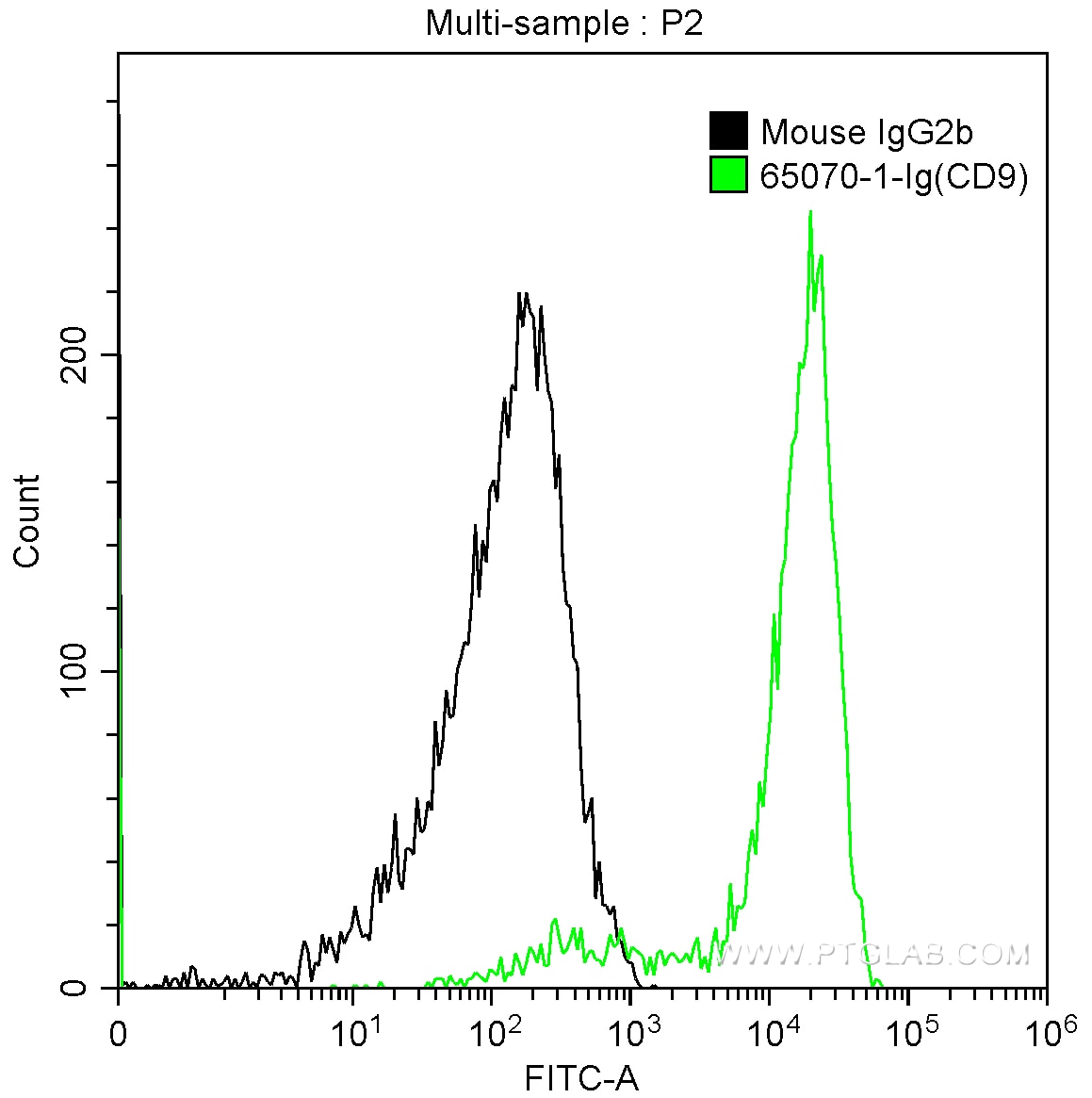Tested Applications
| Positive FC detected in | human peripheral blood platelets |
Recommended dilution
| Application | Dilution |
|---|---|
| Flow Cytometry (FC) | FC : 0.25 ug per 10^6 cells in 100 μl suspension |
| This reagent has been tested for flow cytometric analysis. It is recommended that this reagent should be titrated in each testing system to obtain optimal results. | |
| Sample-dependent, Check data in validation data gallery. | |
Product Information
65070-1-Ig targets CD9 in FC applications and shows reactivity with human samples.
| Tested Reactivity | human |
| Host / Isotype | Mouse / IgG2b |
| Class | Monoclonal |
| Type | Antibody |
| Immunogen |
N/A Predict reactive species |
| Full Name | CD9 molecule |
| Calculated Molecular Weight | 228 aa, 25 kDa |
| GenBank Accession Number | BC011988 |
| Gene Symbol | CD9 |
| Gene ID (NCBI) | 928 |
| RRID | AB_2918376 |
| Conjugate | Unconjugated |
| Form | Liquid |
| Purification Method | Affinity purification |
| UNIPROT ID | P21926 |
| Storage Buffer | Borate buffered saline, pH 8.2. |
| Storage Conditions | Store at 2-8°C. Stable for one year after shipment. |
Background Information
CD9, also known as Tspan-29, p24 or MIC3, is a member of the tetraspanin superfamily (PMID: 1879540). It is expressed on a large variety of hematopoietic and non-hematopoietic cells, such as stromal cells, megakaryocytes, platelets, B and T lymphocytes, dendritic cells, endothelial cells, mast cells, eosinophils, and basophils (PMID: 30356731). CD9 interacts with the integrin family and other membrane proteins, and is involved in cell adhesion, cell motility and tumor metastasis (PMID: 8478605; 21428940; 25805926). Expression of CD9 enhances membrane fusion between muscle cells and support myotube maintenance (PMID:10459022). On oocytes, CD9 is hypothesized to play a role in fertilization of mammals (PMID: 25536312).
Protocols
| Product Specific Protocols | |
|---|---|
| FC protocol for CD9 antibody 65070-1-Ig | Download protocol |
| Standard Protocols | |
|---|---|
| Click here to view our Standard Protocols |




